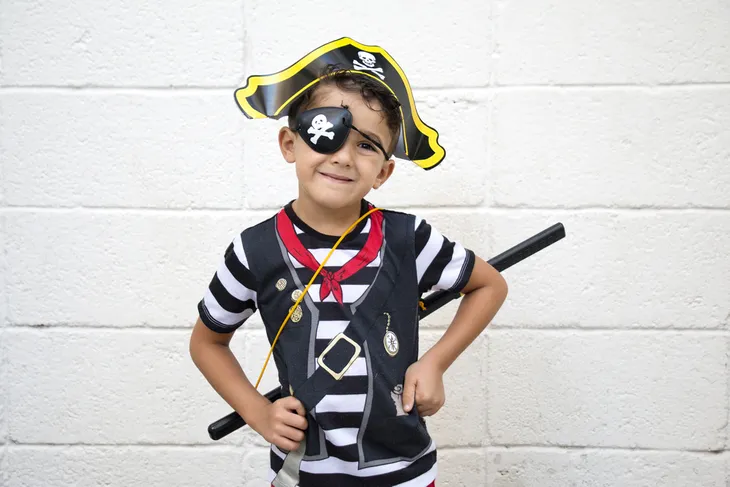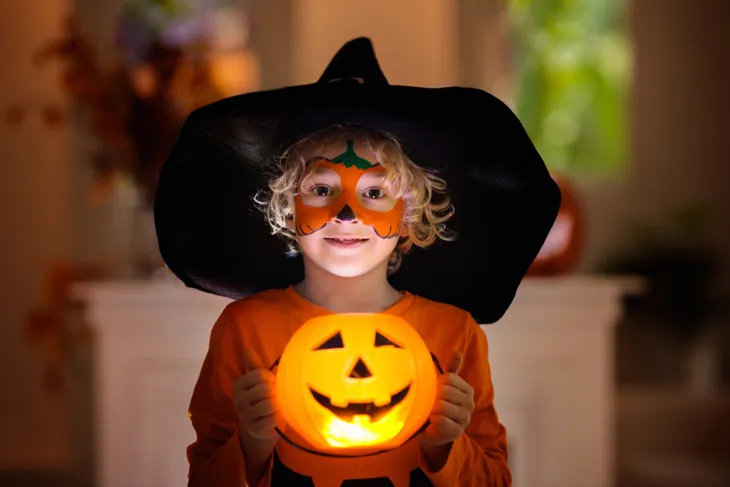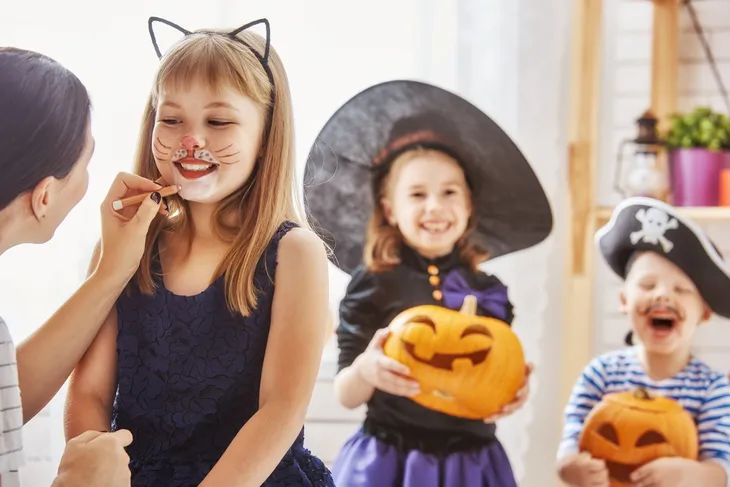Halloween is a time for your little ghouls and goblins to get outside, meet the neighbors and collect some yummy candy and treats. According to some stats, more than 41-million kids were out pounding the pavement for candy in the U.S. alone in 2013.
That also means more safety measures need to be observed because of the high volumes of children and their parents taking over the streets. These measures can be taken before you leave the house, during and after! Here are 6 ways to ensure your little one has a fun and safe Halloween…
1. Look Sharp, Don’t Be Sharp
The Centres for Disease Control and Prevention (CDC) says that while it’s ok to outfit your child with a pirate sword or dagger (or ninja star for that matter), any “weapons” should of course be for show only and be made of flexible plastic.
Giving your child a metal object could pose a risk if they fall, or come into contact with another child. It’s also not a good idea to paint the plastic swords or use them in “duels” as there’s still a chance of getting hurt. Be sure the plastic swords are in plain view and aren’t too long.
2. Encourage Group Walking
There’s strength in numbers, and that’s no different for your children on Halloween. Letting your children go door-to-door by themselves could increase the chances of them getting lost, hurt, or even being harassed by others.
Walking in numbers makes each child more visible, and it also provides security. The American Red Cross notes that if a group is not available to walk with, a trusted adult should step in as a chaperone.
3. Arm Your Child With Light
The days are getting shorter, so it’s wise to give your child a flashlight if they plan to be out after dark. A flashlight will help them be visible to other people and vehicles, as well as help them find their way through the spooky streets.
There are even wearable light-up devices that your child can have illuminated the entire time, as well as reflective costume elements that glow from headlights. Just keep in mind that Halloween is a time to be seen, if not just to show off your child’s great costume!
4. Don’t Mask Vision
Masks and disguises are a traditional part of changing your identity for Halloween. However your child might not let you know if the mask impairs his or her vision. One tip is to test your child’s peripheral vision in particular by holding a finger at each side of their face and asking when they can see it.
The Government of Canada encourages facial makeup instead of masks, as it won’t interfere with eyesight or breathing. However, the Canadian government also notes that even makeup marked “hypoallergenic” can cause reactions on children’s skin, so be sure to do a patch test first.
5. Give Children Only Wrapped Treats
Sure, you may get the occasional apple in your child’s trick or treat bag, which is fine if you inspect it first. However, if the treats seem to be unwrapped or homemade (and from strangers), it’s probably best to give it a pass, suggests the CDC.
While tampering with candy is a less widespread threat than some people may think according to Mental Floss, there’s no way to tell how dated homemade treats like muffins are and if they were baked properly. This could lead to less than happy memories for your little ones. Stick to wrapped goodies.
6. Say No to Invitations Inside
Make sure your children are aware they should stay at the doorstep to receive their treat, and shouldn’t accept any invitations to step inside a home, says KidsHealth.org. Just teach your child to say no and if the homeowner insists, advise they just move on to the next home.
It’s probably best to avoid any houses or blocks that don’t have a porch light on, as that is usually a clear sign that children are not welcome. The same rules goes for any invitations into cars for treats or for a ride, added KidsHealth.








